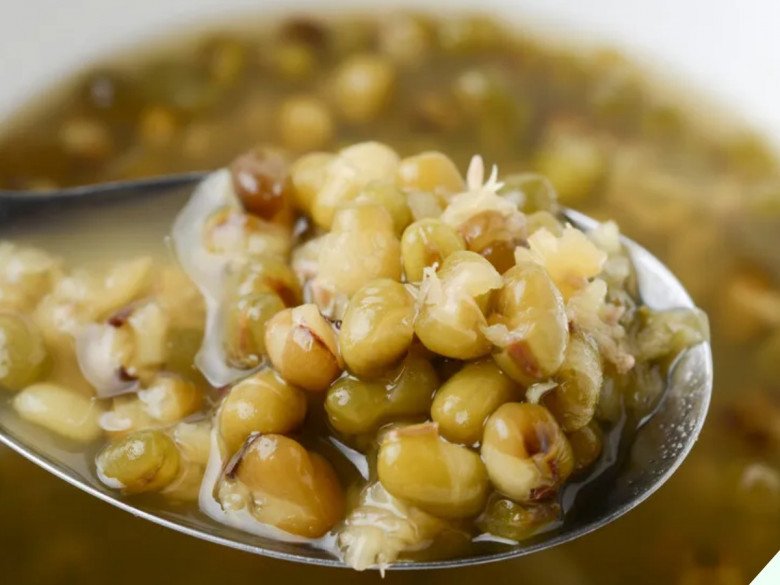
In Traditional Chinese Medicine, mung beans are believed to possess moisture-reducing, dryness-relieving, and heat-clearing properties, making them an excellent health tonic. However, mung beans tend to be rather hard, and it can take a significant amount of time to soften them unless you use a pressure cooker.
In this article, Bếp Eva will reveal the secret to quickly softening mung beans, whether they are green, black, or red. By following these tips, you’ll be able to cook mung beans in just about 10 minutes, saving you both time and effort while creating a delicious dish.
There are 3 crucial things to keep in mind:
First, add vinegar
Add a few drops of white vinegar or lemon juice to the pot of mung beans. This ingredient will help maintain the beans’ vibrant green color and speed up the softening process.
Second, roast the mung beans
Roast the mung beans over low heat for about 10 minutes, or until you hear them popping. Then, turn off the heat.

Third, avoid using an iron pot
When cooking mung beans, it’s best to use a ceramic or porcelain pot instead of an iron one. This is because, during the cooking process, iron pots can release a small amount of alkaline iron ions, which react with the mung beans and turn them red.
Check out the detailed steps for cooking mung beans quickly below:
Ingredients
– Mung beans
– Filtered water
– Vinegar
How to Quickly Soften Mung Beans
1. Rinse the mung beans thoroughly to remove any dirt and discard any damaged or discolored beans. While it’s not wrong to immediately put the beans in a pot and start cooking, doing so may result in harder beans that take longer to soften.

2. Heat a clean pan on the stove and add the mung beans. Stir continuously until you notice a pleasant aroma and hear the beans popping. Roasting the beans beforehand reduces overall cooking time, ensuring that even with a short cooking duration, the beans will soften and expand, becoming tender and flavorful.
3. Transfer the roasted mung beans to a pot and add enough filtered water to cover the beans. Don’t forget to add ½ teaspoon of white vinegar, which will preserve the beans’ attractive green color.

4. Turn on the heat and bring the pot of mung beans to a boil. Once it reaches a rolling boil, reduce the heat to low and simmer for about 10 minutes, or until the beans are tender. Don’t turn off the heat just yet—continue cooking for a few more minutes to ensure the beans are thoroughly softened.

5. Add rock sugar to the pot of mung beans to taste. If you prefer your beans less sweet or not sweet at all, feel free to omit this step and simply allow the beans to cool before serving.

There are numerous ways to cook mung beans, and for a healthier option, you can include additional ingredients such as lotus seeds and pumpkin. These ingredients are not only easily accessible, but they also enhance the flavor of the dish and provide additional nutritional benefits, particularly in terms of calcium content.

The combination of pumpkin and mung beans is especially beneficial for bone health and provides a range of nutrients that are essential for overall well-being. This dish is highly recommended for families with young children, as it helps to cool the body, improve appetite, and promote healthy bone development.

Alternatively, you can pair mung beans with lotus seeds, as both ingredients are rich in fiber and low in calories. Together, they promote healthy digestion and help prevent constipation.
Additionally, mung beans can be cooked with various other ingredients to enhance their nutritional profile, making them a refreshing and nourishing treat during the summer months.
The Dangers of Boiling Eggs: Unbeknownst to Many, This Common Practice Can Be Harmful
Eggs are a staple food for many, but boiling them can be a contentious issue. Some nutritionists claim that boiling eggs in a certain way can produce harmful toxins. While this may be a cause for concern, it’s important to remember that with the right preparation methods, eggs can be a safe and nutritious part of your diet.






































